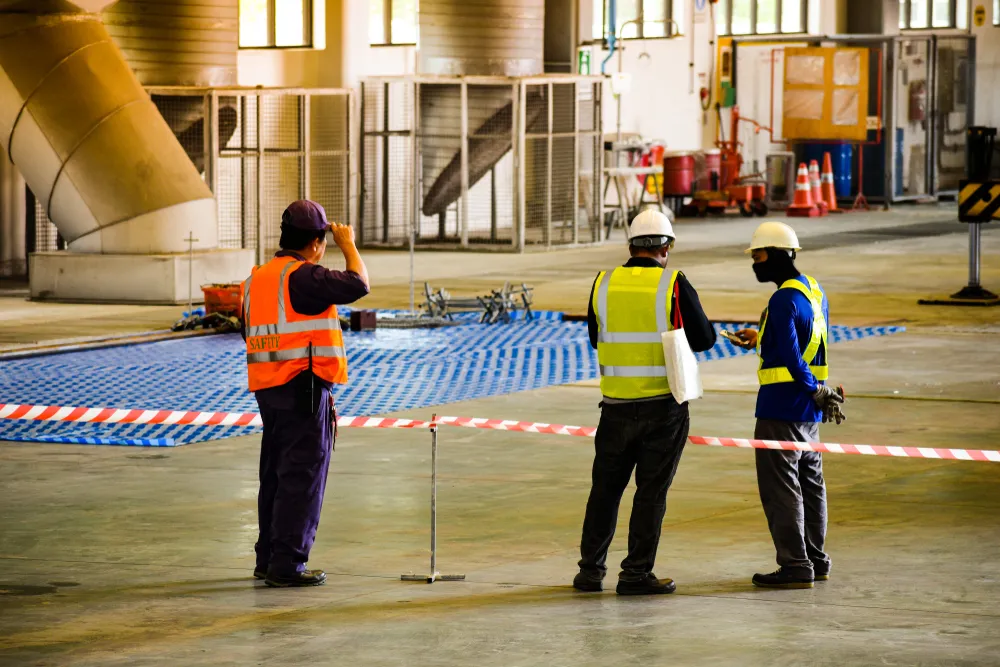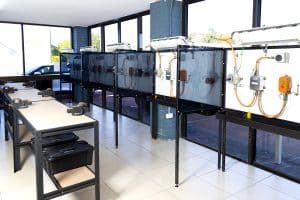The 6-Minute Rule for Roar Solutions
The 6-Minute Rule for Roar Solutions
Blog Article
Not known Factual Statements About Roar Solutions
Table of ContentsThe Best Strategy To Use For Roar SolutionsHow Roar Solutions can Save You Time, Stress, and Money.Some Of Roar Solutions
In such an atmosphere a fire or surge is possible when three basic conditions are satisfied. This is frequently described as the "dangerous area" or "combustion" triangle. In order to safeguard installations from a potential surge a technique of analysing and classifying a potentially unsafe area is required. The objective of this is to make sure the right option and setup of tools to ultimately stop a surge and to make certain safety of life.
(https://au.pinterest.com/pin/1124703706941720474)
No equipment should be set up where the surface area temperature level of the devices is better than the ignition temperature of the provided danger. Below are some usual dust unsafe and their minimum ignition temperature level. Coal Dirt 380C 225C Polythene 420C (thaws) Methyl Cellulose 420C 320C Starch 460C 435C Flour 490C 340C Sugar 490C 460C Grain Dirt 510C 300C Phenolic Resin 530C > 450C Aluminium 590C > 450C PVC 700C > 450C Residue 810C 570C The possibility of the risk existing in a focus high enough to cause an ignition will differ from location to location.
Dangerous area electric equipment perhaps designed for use in greater ambient temperatures. Area Repair By Authorised Employee: Complicated screening might not be needed nevertheless particular procedures might require to be complied with in order for the tools to keep its third party rating. Each piece of devices with a harmful rating should be assessed separately.
What Does Roar Solutions Do?
The tools register is a detailed database of tools documents that consists of a minimum collection of areas to determine each thing's place, technological specifications, Ex classification, age, and ecological data. This details is crucial for monitoring and managing the tools efficiently within hazardous locations. On the other hand, for routine or RBI sampling inspections, the grade will certainly be a mix of Comprehensive and Close evaluations. The proportion of Thorough to Shut inspections will certainly be established by the Tools Risk, which is analyzed based on ignition risk (the likelihood of a resource of ignition versus the likelihood of a combustible atmosphere )and the hazardous area classification
( Area 0, 1, or 2). This variation will likewise affect the resourcing requirements for work preparation. When Whole lots are defined, you can develop sampling strategies based upon the example size of each Great deal, which describes the number of arbitrary equipment things to be evaluated. To determine the required sample size, 2 elements need to be assessed: the dimension of the Lot and the classification of evaluation, which suggests the degree of initiative that need to be applied( minimized, normal, or boosted )to the inspection of the Great deal. By combining the classification of evaluation with the Lot dimension, you can then establish the ideal rejection requirements for an example, suggesting the permitted variety of damaged things located within that example. For even more details on this process, please describe the Power Institute Standards. The IEC 60079 typical advises that the optimum interval between check evaluations ought to not exceed 3 years. EEHA examinations will certainly additionally be carried out outside of RBI campaigns as component of arranged maintenance and equipment overhauls or repair work. These assessments can be credited toward the RBI example dimensions within the affected Whole lots. EEHA assessments are conducted to determine mistakes in electric equipment. A weighted scoring system is vital, as a single item of devices may have numerous faults, each with differing levels of ignition risk. If the combined score of both evaluations is much less than two times the mistake score, the Great deal is regarded acceptable. If the Lot is still taken into consideration undesirable, it should undergo a complete inspection or validation, which may trigger stricter assessment methods. Accepted Whole lot: The reasons for any kind of faults are recognized. If an usual failure mode is discovered, added devices may call for inspection and repair service. Mistakes are categorized by seriousness( Safety and security, Stability, Housekeeping ), making sure that urgent concerns are assessed and dealt with immediately to reduce any effect on safety and security or operations. The EEHA data source should track and tape the lifecycle of mistakes in addition to the restorative activities taken. Carrying out a durable Risk-Based Inspection( RBI )technique is vital for guaranteeing compliance and security in handling Electrical Tools in Hazardous Areas( EEHA) (high voltage courses). Automated Fault Scoring and Lifecycle Monitoring: Effortlessly take care of faults and track their lifecycle to boost assessment precision. The intro of this assistance for risk-based assessment better strengthens Inspectivity's position as a best-in-class service for regulative conformity, in addition to for any asset-centric assessment use instance. If you want finding out more, we invite you to request a demonstration and find how our option can transform your EEHA administration processes.
How Roar Solutions can Save You Time, Stress, and Money.

In regards to eruptive threat, a dangerous area is an environment in which an eruptive environment is present (or may be anticipated to be present) in quantities that call for special safety measures for the building, installation and use equipment. electrical refresher course. In this write-up we discover the difficulties dealt with in the workplace, the risk control measures, and the needed proficiencies to function securely
These compounds can, in specific problems, create explosive environments and these can have significant and tragic repercussions. Most of us are acquainted with the fire triangular get rid of any kind of one of the three elements and the fire can not happen, yet what does this mean in the context of dangerous areas?
In a lot of circumstances, we can do little about the degrees of oxygen in the air, yet we can have considerable influence on sources of ignition, for instance electric tools. Hazardous areas are documented on the hazardous area classification drawing and are determined on-site by the triangular "EX LOVER" indicator. Here, amongst other essential info, zones are split into 3 types depending on the risk, the probability and period that an eruptive atmosphere will exist; Zone 0 or 20 is deemed the most dangerous and Zone 2 or 22 is regarded the least.
Report this page